
Burning the Clavie and Making Marmalade
Winter brings its own distinctive magical memories and holiday traditions. For our Winter Travel Special, our favorite writers and contributing editors share their cherished seasonal adventures.
FESTIVAL OF NINE LESSONS AND CAROLS
[caption id="MagicWinterMemories_Feature" align="aligncenter" width="585"]
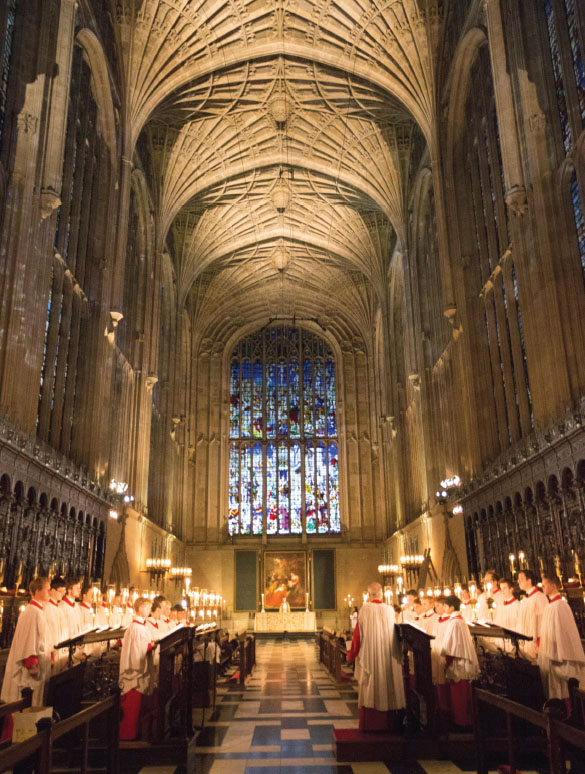
GEOFFREY ROBINSON/ALAMY
[caption id="" align="alignleft" width="106"]

You’re probably familiar with the Festival of Nine Lessons and Carols from King’s College Chapel, Cambridge, a tradition begun in 1918 that is broadcast live around the globe on Christmas Eve. But actually being there at 3 p.m., beneath the world’s largest fan vault, in the splendid Tudor Gothic chapel, as the candlelit choir procession opens with “Once in Royal David’s City”—the hairs stand up on the back of my neck.
In fact, proceedings begin somewhat earlier, with queues to get into the chapel forming from 7:30 a.m.—a social event in itself, as people chat with eager anticipation. As a Ph.D. student just next door at Clare College, I once had an advantage in stealing a march to get to the front. Sadly, no more! Entry is free, with a retiring collection to support this beautiful chapel. Christmas begins here for me.
NORWAY’S GIFT OF GRATITUDE
[caption id="MagicWinterMemories_img2" align="aligncenter" width="424"]

ISTOCK/JOHNNY GREIG
[caption id="" align="alignleft" width="105"]

The giant Norwegian spruce tree that is raised each December in Trafalgar Square is about more than just winter and Christmas; it’s about gratitude. I make a point each year to pass the Square in early December to visit the tree. I have taken all my children, when they were old enough to appreciate its significance, to explain why the people of Oslo gift the people of Britain such a magnificent ornament.
Its arrival marks a tradition that started in 1946 to mark Britain’s unfailing support for Norway in WWII. Occupying the most prominent position at the top of the Square, just in front of the National Gallery, it is my Christmas tradition to linger at the tree’s base. I marvel at its beauty and consider for a moment its symbolism. However cold, winter passes, as did Norway’s suffering. This tree speaks for that suffering in the winter.
WINTER MURMURATIONS OF STARLINGS
[caption id="MagicWinterMemories_img4" align="aligncenter" width="534"]
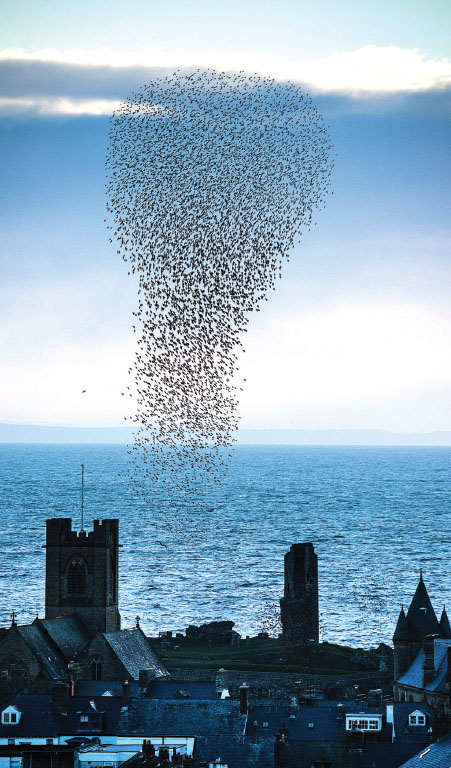
KEITH MORRIS NEWS/ALAMY
[caption id="" align="alignleft" width="93"]

It’s an eerie sight, straight out of a horror movie: thousands of birds swirling, twisting and gyrating in one massive flock, darkening the sky as the sun goes down. Starling murmurations are a real spectacle, one which amazes onlookers during the colder months. Sure, you can go to a wildlife reserve to watch the murmurations take place, but why go to the birds—why not let them come to you? Some of the best starling murmurations can be found in our seaside resorts; the birds perform their incredible acrobatic displays before using the Victorian piers as a safe place to roost. The best I’ve seen is at Blackpool, but if you’re in Brighton or Aberystwyth, keep an eye on the sky at sunset, too!
BURNING OF THE CLAVIE
[caption id="" align="aligncenter" width="420"]
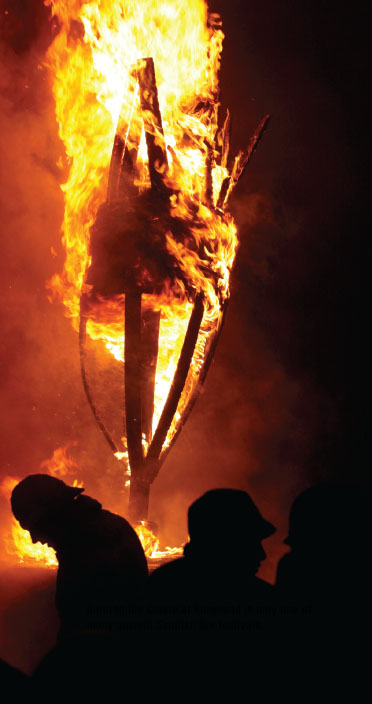
SIMON PRICE/ALAMY
[caption id="" align="alignleft" width="107"]

I have to confess to having a fascination for Scotland’s various winter fire festivals. My personal favorite is the “burning of the clavie” at the small fishing port of Burghead on the Moray coast. This Hogmanay celebration actually takes place on January 11, a throwback to the change to the Gregorian calendar in 1752 when 11 days were “lost.”
The clavie, a half barrel filled with wood shavings and tar, is set alight and carried through the streets by 10 or so local men to Doorie Hill, its final destination. There, it is set in a support made for that purpose, and more fuel is added until the barrel is a beacon of fire. The smouldering embers are considered to be lucky and they are much sought after. The tradition dates from long before 1752 and may be pagan in its origins.
ARBOR LOW IN THE MIST
[caption id="MagicWinterMemories_img8" align="aligncenter" width="874"]

ROBERT ESTALL PHOTO AGENCY/ALAMY
[caption id="" align="alignleft" width="116"]

One of the most magical winter trips I’ve ever taken was a visit to the prehistoric stone circle of Arbor Low on a freezing February morning. Derbyshire has a strange tendency for eerie mists on still days. The cloud hangs in sheets over the hills, thin fingers of fog snake through the bare branches of trees. Sheep watch, stock-still, their woolly coats damp with dew, their only movement the stolid chewing of thin grass.
Arbor Low is in the middle of a field, so you need to leave your car at the farmyard, pop a pound in the honesty box and continue on foot over the stile and up the hill into the mist. The stone circle, built on a ridge, isn’t as big as Stonehenge but it’s still considerable. Standing alone in the foggy silence, it’s impossible to see across to the other side.
In medieval times, superstitious locals pushed the stones flat, scared of fairy-folk. The rock is porous where lichen grows; tiny hollows collect miniature pools of clear water. Achingly beautiful, but it’s easy to understand why those medieval villagers got the creeps.
WALKING THE FORTH BRIDGE AT NIGHT
[caption id="" align="alignleft" width="120"]

For a number of years, a long time ago, I took students to Edinburgh in February. Filling the days in Edinburgh’s quieter, off-season streets was easy, but those dark winter evenings are long. One night every year, I would pile students into taxis for a short ride up to Queensferry, and we would take a bundled walk out to the middle of the Forth Bridge (just a mile or so)—wind whipping off the black firth below, with the Forth Rail Bridge lit up like a string of diamonds and the lights of Leith Harbour beyond. We would warm up at the open hearth fire in the hotel at the bridge end before the trip back to Princes Street. That was the one night when I would allow students of legal age to enjoy a winter warmer by the fire. All slept well that night, and that cold tradition remained an indelible memory.
MAKING PROPER MARMALADE
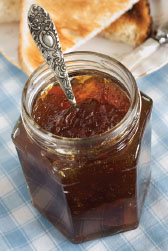
ISTOCK/DAVID PIMBOROUGH





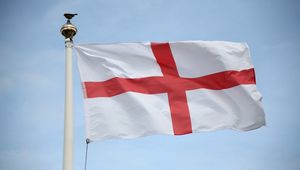



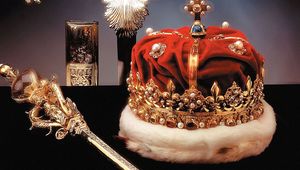
Comments